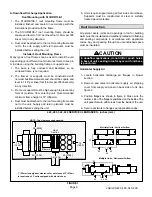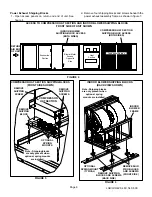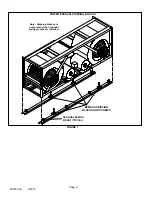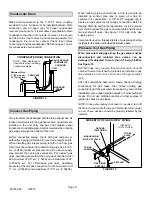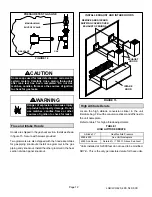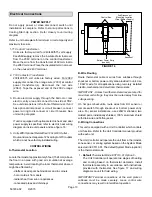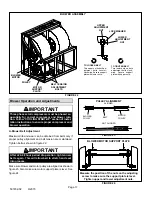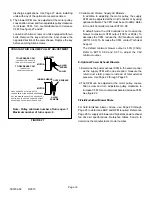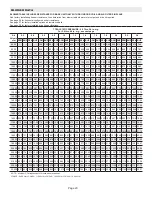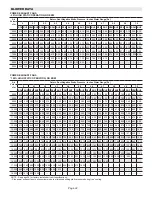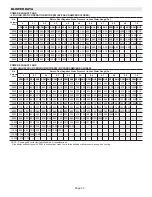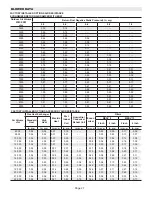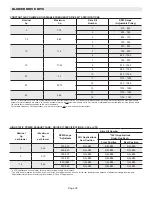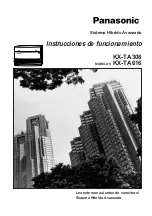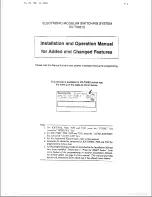
Page 19
507232-02
9/2015
discharge applications. Use Page 27 when installing
units with any of the optional accessories listed.
6- The blower RPM can be adjusted at the motor pulley.
Loosen Allen screw and turn adjustable pulley clockwise
to increase CFM. Turn counterclockwise to decrease
CFM. See figure 27 and 22.
Loosen both Allen screws on units equipped with two
belts. Remove the key and turn the inner sheave the
opposite direction of the outer sheave. Replace the key
before securing Allen screws.
CONSTANT AIR VOLUME PULLEY ADJUSTMENT
TO INCREASE CFM
LOOSEN ALLEN SCREW &
TURN PULLEY CLOCKWISE
TO DECREASE CFM
TURN PULLEY
COUNTERCLOCKWISE
PULLEY
MOTOR
ALLEN
SCREW
SIDE VIEW
FIGURE 27
Note - Pulley minimum number of turns open:1.
Maximum number of turns open: 6.
OUTER SHEAVE
MOTOR
ALLEN
SCREWS
INNER SHEAVE
UNITS EQUIPPED WITH TWO BELTS:
LOOSEN BOTH ALLEN SCREWS AND REMOVE
KEY. TURN INNER SHEAVE THE OPPOSITE DI
RECTION OF THE OUTER SHEAVE. REPLACE
KEY BEFORE SECURING ALLEN SCREWS
7-
Variable Air Volume Supply Air Blowers -
In addition to adjusting the motor pulley, the supply
CFM can be adjusted at the Unit Controller or by using
optional software. The VFD must be set to 60Hz. Refer
to the Unit Controller manual ECTO 0.08.
In default mode, the Unit Controller is set to drive the
blower to maximum CFM output (100% or 60Hz). To
decrease the CFM, reduce the VAV maximum output
(ECTO 0.08). To increase the CFM, contact Technical
Support.
The default minimum blower output is 50% (30Hz).
Refer to ECTO 0.06 and 0.07 to adjust the VAV
minimum output.
E-Optional Power Exhaust Blowers
1-Determine the power exhaust CFM in the same manner
as the supply CFM with one exception: measure the
return duct static pressure instead of total external
pressure. Use Page 22 through Page 25.
2-The RPM can be adjusted at the motor pulley. Loosen
Allen screw and turn adjustable pulley clockwise to
increase CFM. Turn counterclockwise to decrease CFM.
See figure 22.
F-Field-Furnished Blower Drives
For field-furnished blower drives, use Page 20 through
Page 25 to determine BHP and RPM required. Reference
Page 28 for supply air blower and high static power exhaust
fan drive kit specifications. Reference tables 5 and 6 to
determine the manufactuer's model number.


